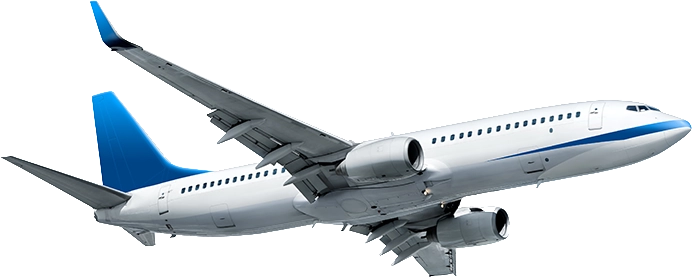Pilot License Difference between SPL, PPL, and CPL in India
After completing your 12th grade, you can pursue various aviation courses to kickstart your journey for a pilot license. Not every course will lead to a pilot journey. Some courses will lead to other trades in Aviation.
The aviation field’s different courses
- Aircraft Maintenance Engineering (AME)
- Aircraft Design and Maintenance course
- Aircraft Dispatcher
- Airport Management
- Air Traffic Control Courses
- Air Hostess/Cabin Crew Training
Here are some popular courses to choose to get your pilot license. This systematic approach helps start a career as a pilot in Indian aviation.
- Student Pilot License (SPL)
- Private Pilot License (PPL)
- Commercial Pilot License (CPL)
There are different levels and stages that one needs to clear before completing the commercial pilot course. The pilot aspirant needs to finish his ground class, clear all exams and then apply for a student pilot license.
Do you plan to apply for the Indigo Airlines Cadet Pilot Program (CPP)? If you want to go in for the conventional pilot program it does not matter. The DGCA syllabus helps understand the theoretical concepts one should know before sitting in the cockpit. After securing a CPL, one can aim for an Airline Transport Pilot License (ATPL). The reason is that Indian aviation has still not adopted the Multi-Crew Pilot License (MPL) added by ICAO in 2006.
Student Pilot License (SPL)
Individuals wishing to take up flight training to become a pilot first acquire a student pilot license. The SPL allows the candidate to train as a pilot under the guidance of a certified flight instructor. Here’s what you need to know about obtaining an SPL in India.

SPL Pilot License Eligibility Criteria:
To be eligible for an SPL in India, the candidate must meet the following general requirements:
- The candidate should be at least 16 years of age.
- He should have clear concepts of Physics and Math to understand calculations.
- The candidate needs to pass a Class 2 medical examination. A pre-designated medical examiner conducts this exam.
- He should have a minimum educational qualification of a 10th-standard pass.
- English reading, writing, and comprehension should be your abilities.
How to Obtain an SPL:
Theory Examinations: You’ll need to pass various DGCA theory examinations during your training. These exams cover the subjects you studied in the Best Ground School in India.
Select the Best Flying School: Choose a DGCA (Directorate General of Civil Aviation) approved flying school in India. The DGCA is the regulatory body for civil aviation in India. The DGCA regulates the safety of civil aviation in India. Hence you can be sure of high standards of safety norms related to flight training.
Join Ground School: Enroll in the ground school program. This program covers aviation theory, regulations, navigation, meteorology, and other subjects.
Medical Examination: Schedule a Class 2 medical examination with a DGCA-approved aviation medical examiner. Your passing the medical exam guarantees that you are in good enough health to fly.
Apply for SPL: The student after completing the ground school and passing the medical examination goes to the flying school. Then he applies for the Student Pilot License through the flying school. The flight school guides him through the application process.
Flight Training: When the student secures his SPL, he is eligible to start flight training. This he does under the guidance of a (CFI) Certified Flight Instructor. He adds up flying hours and gets hands-on experience during this stage.
Multi-Crew Flying: The candidate being a novice begins learning under the guidance of a (CFI) Certified Flight Instructor.
Flight Tests: The student pilot needs to pass the flight training exam, before advancing to the advanced PPL level. A flight instructor assigned by the DGCA administers the flight training exam.
Upgrade to a Private Pilot License (PPL): When you meet all the requirements of SPL, expected flying hours, and clear all the exams, and necessary checks, you can apply to upgrade and convert your SPL to a PPL (private pilot license).
Private Pilot License (PPL)
A Private Pilot License (PPL) permits the candidate to fly an airplane for individual and sporting purposes. You can’t fly for commercial purposes or join someone on a salary basis. It’s a typical and popular license for hobby flying and sport flying. The following are some requirements to obtain a Private Pilot License (PPL).

PPL Eligibility Criteria:
The qualifying standards for getting a PPL may differ from one country to another. Indian Aviation Regulatory will require the below checks before offering you a PPL.
Age Bar: You should not be less than 17 years of age to apply for a PPL.
Educational Qualification: You should be a 10+2 (Sr. Secondary) or equivalent diploma holder.
Medical Checks: You should clear the Class 1 medical assessment conducted by a DGCA-approved medical examiner. You must undergo certain medical tests to clear the Class 1 medical testament.
Language: You should have a good command of the English language to read, write, speak, and understand the neutral accent. You should be able to communicate with your co-pilot and (ATC) Air Traffic Control without any issues.
How to Move from SPL to PPL (Private Pilot License):
The candidate finishes all the checks for SPL, and thereafter clears following pilot training modules to secure his PPL license. He clears the following checks as given under:
Flight Training: After completing 40–50 hours of flight training, you will clear every evaluation. During this preparation, you’ll figure out how an airplane flies and how to operate all the functions within the cockpit.
Solo Flight: The flying club approves solo flying for the student pilot, once he acquires sufficient experience and proven abilities. The student pilot must complete several examinations and evaluations before acquiring solo command of the aircraft.




